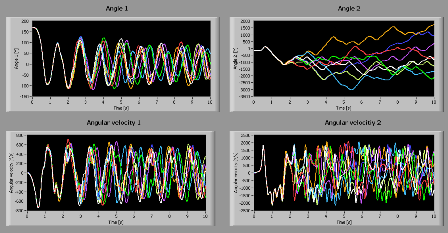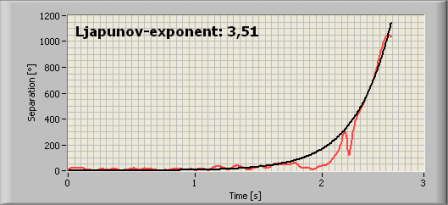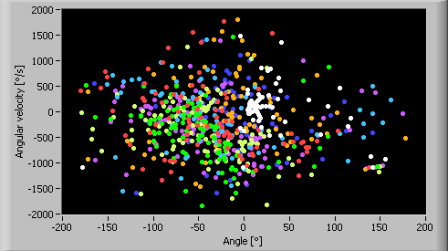Double pendulum
Measurement results
Synchronized data
We measured 8 different movements (started from near-to same initial conditions), and we offline synchronized them.
The examined initial conditions:
angle 2 = -179,5 degree, angular velocity 2 = 0 1/sec
Ljapunov-exponents
We calculated the Ljapunov-exponents for the movement-pairs. To find, how long the period of time where we calculating, we used the reduced chi-squared method (like Shrinbot et al).
Download the xls table with Ljapunov-exponents
Phase space section
We calculated a phase space section from this datas, with these section parameters:
angle 1 = 0 and angular velocity 2 > 0
Informative to compare the part of this section with the Poincaré-section calculated for a conservative double pendulum, chosen the appropiate energy-levels. (This can be the starting energy, or we can examine, where is the trajectory-intercection of the plane in the theoreical Poincaré-section calculated in the actual energy-level.)
<- back





